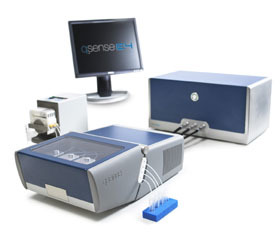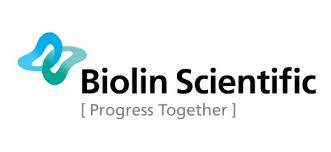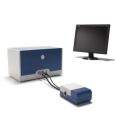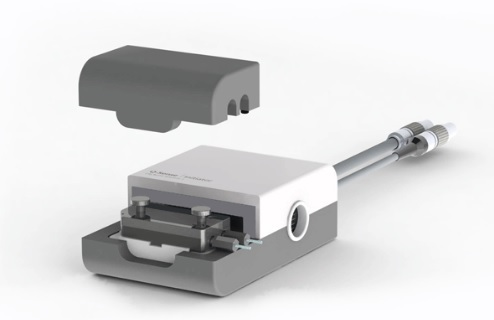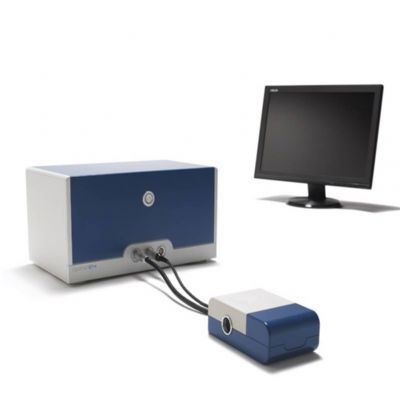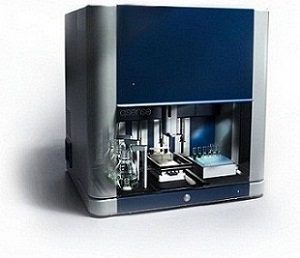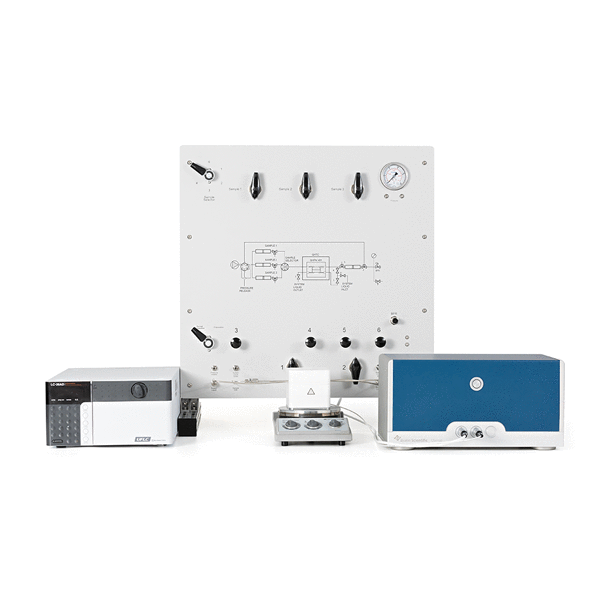本文中展示了QCM-D如何进行生物材料的免疫原性研究。引入体内的生物材料容易引发人体血清中的补体活化,之后会导致炎症的产生。通过将不同的材料表面暴露在人体血清中,用来进行对生物相容性的研究。
方案详情

Biolin Scientific[ Progress Together ] [Application Note]3 Analyzing surface induced complement activationThis application note shows how QCM-D can be used to study immunogenicity ofbiomaterials.Biomaterials introduced into the body are known to cause surfaceassociated complement activation in human sera, which triggers inflammation.By exposing different surfaces to human serum containing complement proteins,aspects of blood compatibility of the materials can be evaluated. Here, the bloodcompatibility of different biomaterials are quantified as amount of bound C3 con-vertase. Quartz Crystal Microbalance with Dissipation (QCM-D) is anacoustic surface sensitive technique, which provides simultaneous,real-time information on mass and structure of molecular layers.With the QCM-D technique it is possible to make accuratedeterminations of protein interactions on different biomaterialsurfaces in real-time. Here we show how QCM-D can be a usefultool in evaluating the immunogenicity of different biomaterials. Introduction When a biomaterial is introduced into the body, proteinadsorption and activation of complement proteins occur.Complement proteins are mediators of inflammation, and aretherefore of interest in biomaterials research. Part of the surfaceinduced activation of the complement system is C3 convertase,which adsorbs to surfaces and can be detected using QCM-D. Approach The following surfaces were prepared for the investigation: 1. lgG, positive control 2. Polyurethane urea (PUUR) 3. Polystyrene (PS) 4. Hydrophobic self-assembled monolayer (SAM) 5. Titanium dioxide (TiO,) 6. Heat-inactivated sera, negative control The surfaces were prepared on Q-Sense gold sensors. Prior tothe measurement, surfaces were incubated with human serumcontaining complement proteins. The pre-incubated sensors werethen exposed to rabbit anti-C3 convertase antibodies in situ toquantify the amount of adsorbed C3 convertase and to study theantibody binding in real-time. Results & Discussion Figure 1 shows the detected amount of anti-C3 convertaseantibodies on the different surfaces. Binding was observed on allsurfaces, though in differing amounts. As expected, complementactivation was found on the pre-adsorbed IgG surface, whichacted as positive control. Positive responses were also detectedon PS and PUUR coated sensors. However, the degree ofanti-C3 convertase binding on the TiO, surface was as low ason the negative control (heat-inactivated sera), indicating lowimmunogenicity of TiO,. The order of complement activation(as judged from three separate measurements per surfacemodification) was PUUR>PS= SAM>TiO,. Amass (ng/cm2) This work shows that QCM-D is a suitable method to studyblood compatibility of different biomaterial surfaces. Real-timemeasurements of the amount of adsorbed proteins is a uniqueapproach to screening biomaterial immunogenicity. The flexibilityof QCM-D in allowing use of different surface materials (metals,polymers or chemically modified surfaces) without need tocalibrate and without affecting the sensitivity, is an importantbenefit in the field of biomaterial research. ( References: ) ( Sellborn, A, Andersson, M, Fant, C, Gretzer, C and Elwing, H (2003) Methods for research on immune complement activation on m od i fied sensor surfaces, Colloids and Surfaces B : B iointerfaces 27, 295-301. ) Biolin Scientific [ Progress Together] E-mail:info@biolinscientific.combiolinscientific.com []Q-Sense AN
确定

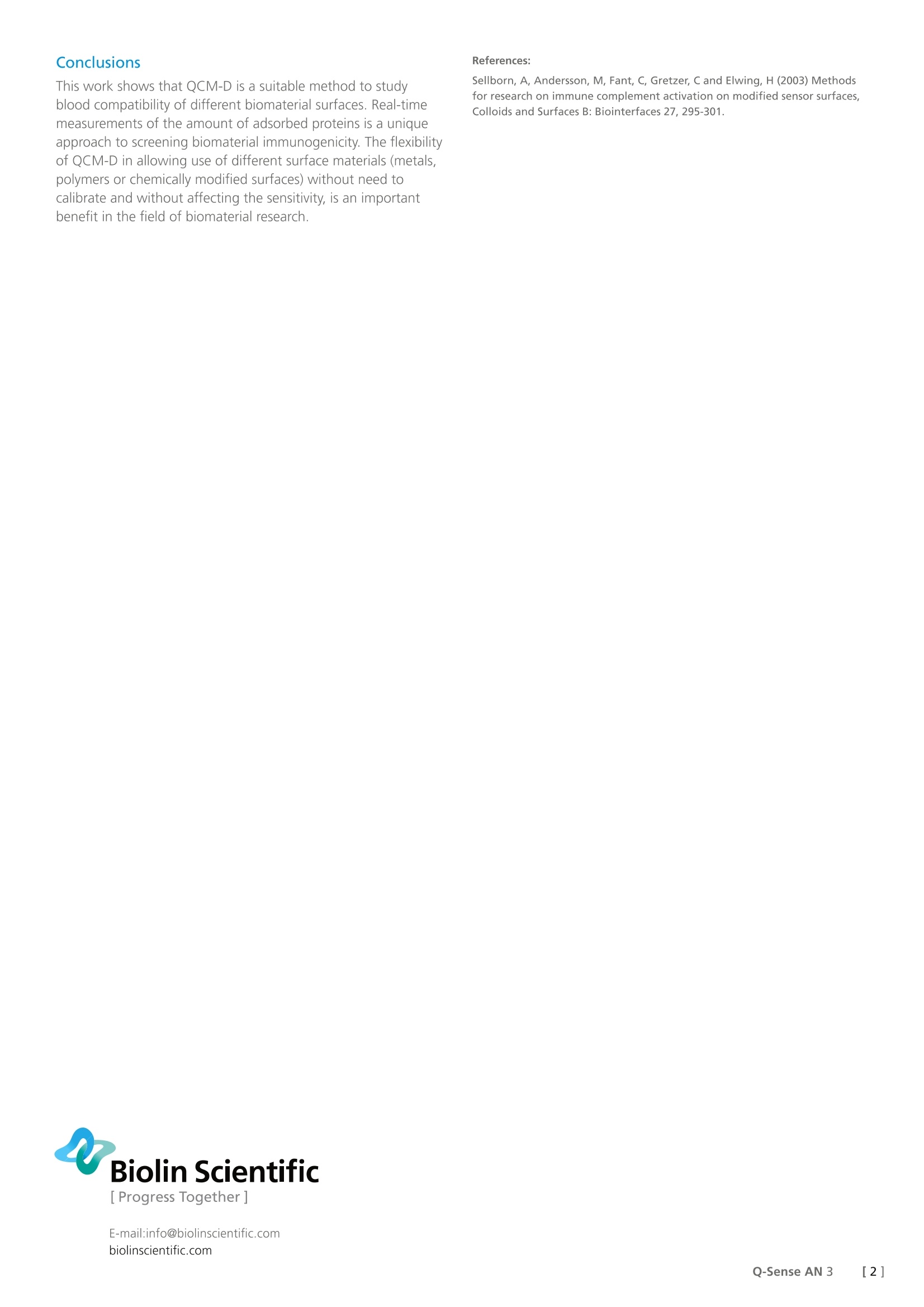
还剩1页未读,是否继续阅读?
瑞典百欧林科技有限公司为您提供《使用QCM-D技术研究表面诱导人体血清补体活化》,该方案主要用于全血/血清/血浆中--检测,参考标准--,《使用QCM-D技术研究表面诱导人体血清补体活化》用到的仪器有QSense卓越版四通道石英晶体微天平、QSense Explorer扩展版石英晶体微天平、QSense全自动八通道石英晶体微天平
推荐专场
相关方案
更多

